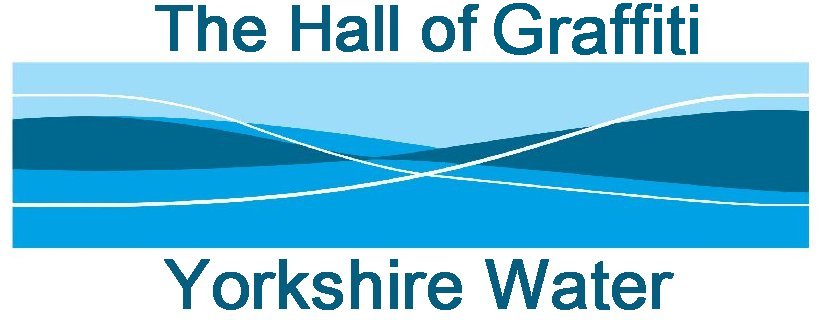 In the tiny picture-postcard
village of Lower Bradfield just outside Sheffield, an abandoned water
works sits at the side of the road, overgrown and completely surrounded
by unsightly Heras fencing. The water works was
built in 1913 to filter and treat water taken from the Dale Dike,
Strines and Agden reservoirs in the nearby Loxley Valley. In
addition to treating the water, supply pressure was raised here with
huge pumps before sending it on into Sheffield. The water works was
cutting edge in it's time and it even had the first telephone to be
installed in Bradfield back in 1930.
In the tiny picture-postcard
village of Lower Bradfield just outside Sheffield, an abandoned water
works sits at the side of the road, overgrown and completely surrounded
by unsightly Heras fencing. The water works was
built in 1913 to filter and treat water taken from the Dale Dike,
Strines and Agden reservoirs in the nearby Loxley Valley. In
addition to treating the water, supply pressure was raised here with
huge pumps before sending it on into Sheffield. The water works was
cutting edge in it's time and it even had the first telephone to be
installed in Bradfield back in 1930.
Clean, safe and seemingly
limitless mains water running
readily under pressure from a tap 24/7, is actually a relatively recent
innovation in Great Britain - it was only in 1880 that Sheffield City
Council assumed responsibility for the supply of water to the city
whereas previously the public had relied on local wells, stream etc. -
the provision of water was the individual's own responsibility until
late in the Victorian era.
 In
the next big change in 1974 Yorkshire Water Authority took over
supply from the
city authority and then finally during the Thatcher government some years later,
the entire UK water industry was privatised with the Water Act of 1989,
and Sheffield began to be supplied by the newly created Yorkshire Water
plc. In their hands modernisation of the system began and the pumping
house at Lower Bradfield was abandoned in 1994 when a new pump house and
processing plant was built elsewhere. Since that time the building has
remained an eyesore in an otherwise beautiful village.
In
the next big change in 1974 Yorkshire Water Authority took over
supply from the
city authority and then finally during the Thatcher government some years later,
the entire UK water industry was privatised with the Water Act of 1989,
and Sheffield began to be supplied by the newly created Yorkshire Water
plc. In their hands modernisation of the system began and the pumping
house at Lower Bradfield was abandoned in 1994 when a new pump house and
processing plant was built elsewhere. Since that time the building has
remained an eyesore in an otherwise beautiful village.
The entire site appears never
to have been much more than walls and a roof, and in much of the
machinery area there are not even concrete floors, just a bed of
coarse sand. A separate room is situated towards the front of the
building where huge, blue painted, open topped, inspection tanks give
the appearance of a primitive bath house. Here, workers checked the
water quality and then added chemicals such as chlorine and fluoride.
The biggest open area within
the building has a huge expanse of undecorated wall and inevitably that
has attracted the attention of graffiti artists over the years. I am not
normally a lover of the artistic efforts of your average chav - there is
a limit to how many times I wish to see crude, testosterone fuelled,
phallic representations crudely daubed by acne riddled wide boys; or
witty and erudite one liners such as, "Daz sucks c*ck" etc. etc.
etc...*yawn! This building however has attracted a totally different
kind of artist, most of whom actually have at the very least a
smattering of real talent and many of the paintings are actually quite
remarkable works of art.
 It's
a shame then that the combination of damp and sunlight are causing
massive and rapid deterioration, bringing much of the plaster "canvas"
off the walls - indeed, the beautiful girl's face painted in the
corridor at the side of the main pumping hall has already lost a third
of one side including an eye. If you wish to see what "she" used to look
like before the plaster began to crumble then might I suggest you take a
peek at Elle Dunne's highly individual and artistic photographic work.
She visited the pump house in 2008 so it is interesting, and rather sad,
to pick out the paintings that are gone now. Elle tends to work a lot in
monochrome and captures some very dramatic images.
It's
a shame then that the combination of damp and sunlight are causing
massive and rapid deterioration, bringing much of the plaster "canvas"
off the walls - indeed, the beautiful girl's face painted in the
corridor at the side of the main pumping hall has already lost a third
of one side including an eye. If you wish to see what "she" used to look
like before the plaster began to crumble then might I suggest you take a
peek at Elle Dunne's highly individual and artistic photographic work.
She visited the pump house in 2008 so it is interesting, and rather sad,
to pick out the paintings that are gone now. Elle tends to work a lot in
monochrome and captures some very dramatic images.
In May, 2012
we visited the water works again to see what had changed since our
previous trip.
Here are our photographs
from the two visits, we hope you enjoy
them!
|
As always on our site, if
you wish to see a bigger version of any particular picture then
simply click on the smaller picture of your choice and a 1200 x
900 version will open in a new window. |

Click the
panoramic photo above if you wish to view a fully interactive panorama
in a separate window...

